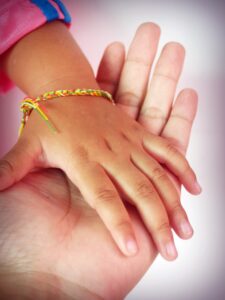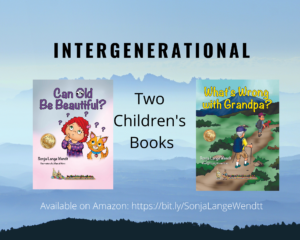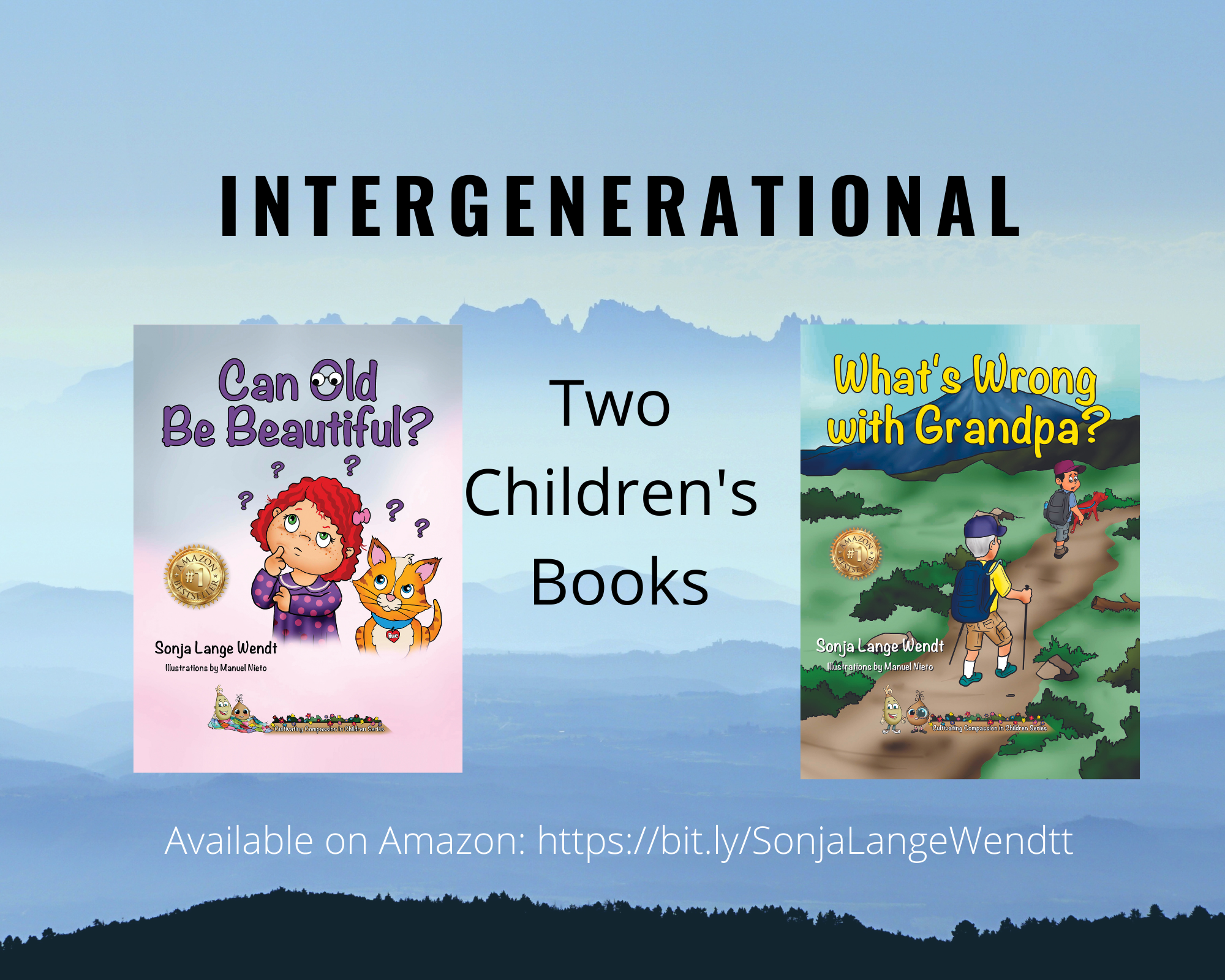June 1 is Intergenerational Day
Have you noticed interactions between young children and older people?  Some interactions are cute and sweet. Other interactions show fear and confusion. The way to get positive exchanges between the generations is to bring them together, let them intermingle and enjoy time with each other. Time together reduces fear and intimidation while strengthening kindness and compassion. It is a mutually beneficial connection. Seniors are energized by the laughter and excitement of a child while the child is given coveted time with an adult to learn and grow. Especially today, with the outbreak of Covid-19 over the past few years, seniors have been isolated and lost many of the connections that give them joy, and a purpose for living and thriving. Children have also been isolated from human connections inhibiting valuable social interaction skills.
Some interactions are cute and sweet. Other interactions show fear and confusion. The way to get positive exchanges between the generations is to bring them together, let them intermingle and enjoy time with each other. Time together reduces fear and intimidation while strengthening kindness and compassion. It is a mutually beneficial connection. Seniors are energized by the laughter and excitement of a child while the child is given coveted time with an adult to learn and grow. Especially today, with the outbreak of Covid-19 over the past few years, seniors have been isolated and lost many of the connections that give them joy, and a purpose for living and thriving. Children have also been isolated from human connections inhibiting valuable social interaction skills.
What is it about getting old? There seem to be so many negative vibes about it, especially in the western hemisphere. It’s certainly not an easy road to travel as the body weakens and no longer can support the activities previously performed. But as much as we try to resist it, aging is a natural part of life, from the moment we take our first breath, we are getting older. No one has found the coveted fountain of youth or the time warp machine, at least outside of the movie theaters. It might not be long before we all can space travel and live on another planet; that may change the aging process as we know it today.
Somewhere along the way, there is the transition of looking forward to getting older, to when we wish time would slow down or stop. Little kids are excited to reach another birthday. But people in their thirty’s, tend to want to resist the affects of aging and would rather pass up getting another year older. Aging is difficult. Who wants to lose their physical and mental abilities, and their independence? We see hearing aids, canes, and walkers and cringe. Little kids don’t understand some of the pain, suffering and disabilities that aging may cause. They don’t realize that grandpa may be speaking loudly, not because he’s mad at them, but because he’s adjusting to new hearing aids. Grandma may not be able to keep up with little Sarah like she did last year while hiking on a favorite trail or might not have as much patience or stamina since her body feels achy today.
Then to compound the issue, western culture tends to see beauty only in youth with every attempt to look young. There are products galore and constant advertising of these products to reduce wrinkles, grow more hair on those balding spots, or color your hair from the natural gray. Children hear and see these messages. Today children suffer more than ever to find themselves, accept themselves, and believe that they are truly enough. We hear more frequently of teen and even child suicides. The messages of not accepting natural processes of aging are similar to kids accepting themselves as they are, even if they are not skinny, athletic, popular, smart, funny or beautiful. This is another reason to bring the old and the young together, to walk through time with each other, share feelings and challenges, and bring together mutual understanding and compassion. We are in this life together, all generations, to experience it with each other.
Face to face interaction is invaluable. Bringing the young and the old together to increase understanding makes me think of the “Human Library” in Denmark and several other countries, where you borrow a person instead of a book, to listen to their story for 30 minutes. It isn’t just a generational thing with the Human Library, but getting to know all people, their walks of life, in order to help reduce prejudices. It’s about not “judging a book by it’s cover,” like we so often do when we see a hunched over, gray haired, wrinkled person in our way. We don’t take the time to look inside.
There are less opportunities for intergenerational exchanges today in the western culture. Family generations are often separated by distance. Fortunately, through technology we can interact virtually. But having meals, birthdays, picnics and attending sporting events and other activities of a grandchild in person, may not be possible, at least not on a regular basis. Parents are often busy with work maintaining daily activities or dealing with sicknesses and disabilities within the family that they may not be able to see that their other child needs more than their normal demands of that day. Even if relatives are not physically nearby, there are seniors that would love to interact with children within a community. Let’s bring them together!
Traditional churches are a notable example of intergenerational connections. We see new babies, little kids, teens, young parents, and seniors all gathered in one room weekly. They become family. The highs and lows and life passages from the birth of a child to death of a long-time member are experienced and shared. We see a baptism of a child and within what seems like minutes, that same child is graduating from college or getting married. But today there are also the mega churches where children are often in their own service while parents attend a more adult message. That unfortunately, creates a generational separation where more effort is needed to bring them together.
Two of my children’s books that are part of the Cultivating Compassion in Children Series, specifically relate to intergenerational issues. One is called, Can Old Be Beautiful which addresses the messages children hear about wrinkle cream and coloring the gray out of your hair. Little Maggie questions her grandmother as to what makes something beautiful. It’s a genuine conversation where they discuss beautiful things and then old things that are beautiful like an old patchwork quilt, or majestic mountains. It starts the dialogue of self-image with discussion questions at the end.
 The other book is called, What’s Wrong With Grandpa? The majority of this story takes place on a Colorado trail with little Joey and his grandpa. Joey observes changes in his grandpa from last year and misunderstands them. He thinks his grandpa is mad at him because Grandpa is talking really loudly. He’s not aware that his grandpa is adjusting to new hearing aids. Grandpa is also using walking sticks and no longer can beat Joey on their challenges along the trail hiking and climbing. Joey is confused by these new oddities until he finally breaks down in tears thinking something is wrong with his grandpa. They have a conversation, and Joey begins to understand the aging process and how this change in life can create disabilities that sometimes discourage and frustrate Grandpa, too.
The other book is called, What’s Wrong With Grandpa? The majority of this story takes place on a Colorado trail with little Joey and his grandpa. Joey observes changes in his grandpa from last year and misunderstands them. He thinks his grandpa is mad at him because Grandpa is talking really loudly. He’s not aware that his grandpa is adjusting to new hearing aids. Grandpa is also using walking sticks and no longer can beat Joey on their challenges along the trail hiking and climbing. Joey is confused by these new oddities until he finally breaks down in tears thinking something is wrong with his grandpa. They have a conversation, and Joey begins to understand the aging process and how this change in life can create disabilities that sometimes discourage and frustrate Grandpa, too.
In addition to the natural, biological process, different cultures have diverse attitudes and practices with aging that affect how aging is perceived, addressed, and therefore experienced. Taking it even further than mentioned above with the emphasis on youth, western culture tends to identify aging as a shameful and a somewhat embarrassing experience, with physical signs of ageing regarded as distasteful and something we want to avoid. We mock the old lady driving a car slowly down the street, and we get impatient with the older gentleman walking in front of us with his walker.
But not all cultures are like this. When we visited Greece and Turkey this past fall, we talked and interacted with the locals. One tour guide, native of Turkey, talked about his wife, children, and parents all living together in their home, helping each other, and supporting each other. He talked about honoring and respecting the elderly and admired their wisdom and closeness to God. Native American culture has its own traditions and attitudes toward aging and caring for the elderly. In many tribes, elders are respected for their wisdom and life experiences which they then pass on down.
Korean regard aging as rooted in the Confucian principle where one must respect their parents. I worked in the United States with people from India, in person and virtually. Their homes in India consisted of the grandparents, parents and children. Their elders are considered the head of the family. Advice is sought from them on many issues from family to finances and there is respect demonstrated for those in authority. I felt genuine respect and concern even in the workplace, from the people in this culture. African American culture has another perspective and see death as part of the natural rhythm of life, which lessons the fear of aging.
There is a need to bridge the generations. The generation classifications are:
- Generation Alpha: Born 2016 and after
- Generation Z, iGen, or Centennials: Born 1996–2015
- Millennials or Gen Y: Born 1977–1995
- Generation X: Born 1965–1976
- Baby Boomers: Born 1946–1964
- Silent Generation: Born 1945 and before
Intergenerational learning helps people understand the commonality of the human experience, no matter what generational group a person falls under. Bridging the generations rather than setting up barriers, brings people together in purposeful, mutually beneficial activities and support. This promotes greater awareness and respect between generations and contributes to building more cohesive communities and relationships. Intergenerational practices are inclusive, welcoming and creates a bigger picture enhancing understanding which is the nourishment to growing compassionate people and relationships.
What are you going to do June 1 to acknowledge Intergenerational Day? How about reading an Intergenerational book to a child, or maybe being that book, like is done at the Human Library.
Sonja Wendt
- Planting Seeds of Compassion One Story at a Time
- Author and Reading & Seeding Intergenerational Leader
- Cultivating Compassion in Children Books Series
- https://www.sonjawendt.com/
- Books Available on Amazon: http://bit.ly/SonjaLangeWendt
©2022 sonjalangewendt All Rights Reserved
